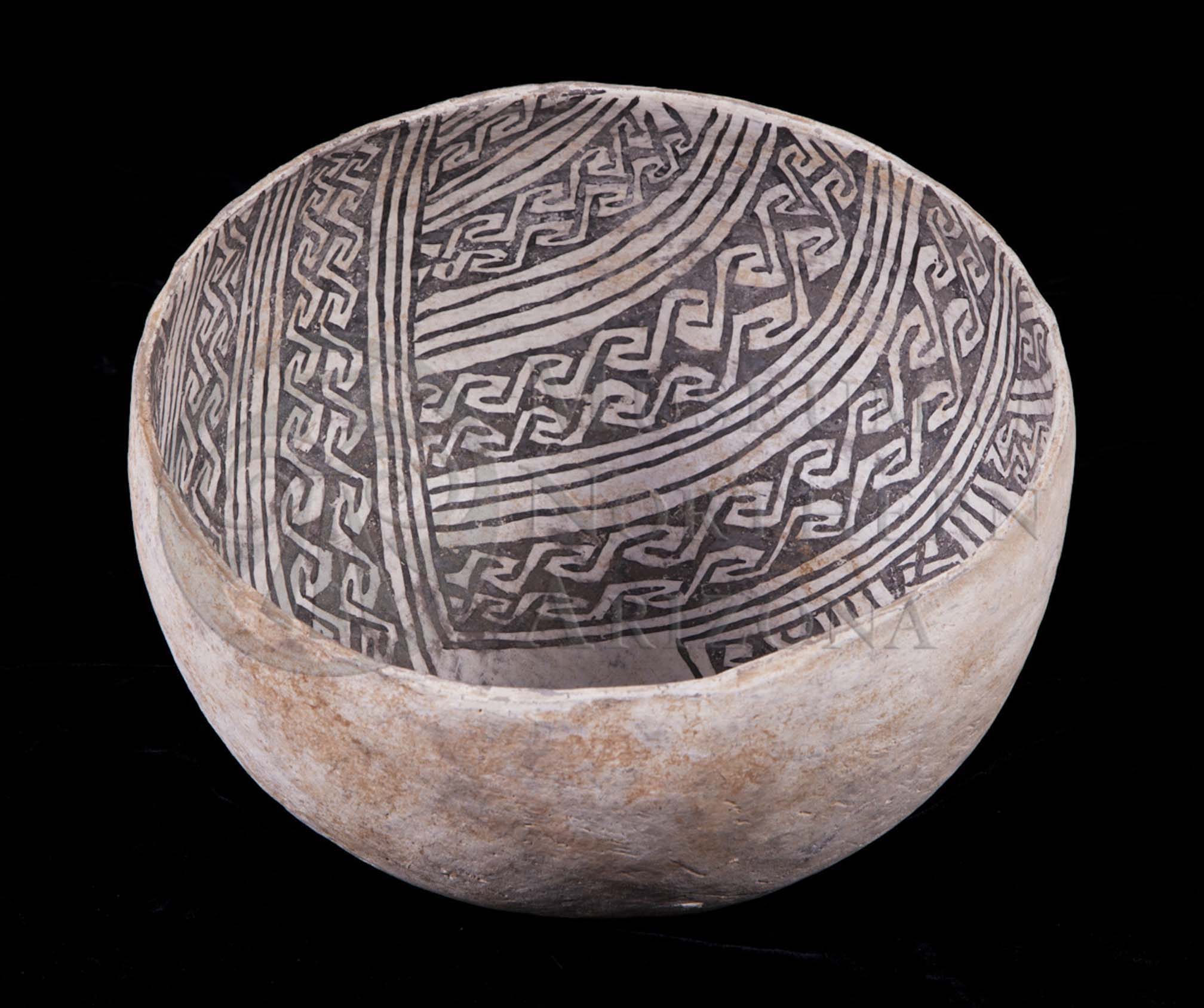
Walnut Black-on-white bowl from the Museum of Northern Arizona collections. Click the image to open the Walnut Black-on-white gallery.
Walnut Black-on-white is a Little Colorado White Ware found across the entire range of the ware, including from Petrified Forest National Monument to the San Francisco Mountain region, the Tonto Basin, the Verde Valley, and the upper Gila River drainages.
Archaeological Culture: Ancestral Puebloan
Date Range: AD 825-1300
Construction: By coiling.
Firing: In a reducing atmosphere.
Core Color: Dark gray (due to iron, not carbon) to light gray.
Carbon Streak: None.
Temper: Abundant opaque angular fragments of varying size, mostly fine, usually gray or tan (sherd), quartz grains rare.
Surface Finish: Bowl interiors and jar exteriors always coated with a thin white or light oyster gray slip; usually fairly well polished; often crazed; exterior bowls scraped, not well smoothed; often somewhat bumpy, usually pitted; usually coated with thin white slip or wash; not polished; often chalky; jar interiors usually fairly well smoothed.
Surface Color: Gray or white.
Forms: Jars, bowls, jugs, dippers, occasionally eccentric forms.
Vessel Thickness: 2.9 to 8.1 mm; average 5.5 mm (bowls); 3.6 to 8.6 mm average 5.5 mm (jars).
Decoration:
- Paint: Black, usually dense, dull, occasionally thin and watery with brownish tint in most types; sometimes near glaze.
- Pigments: Carbon.
- Design: Bowl interiors and jar exteriors in all types; rarely on bowl exteriors.
Compiled from the following sources:
Colton, Harold S., and Lyndon L. Hargrave. (1937) Handbook of Northern Arizona Pottery Wares. Museum of Northern Arizona Bulletin 11, Flagstaff, Arizona.
Compiled by:
April Peters, Northern Arizona University Anthropology Laboratories.
